
Themes
tribal artefacts
JEWELRY OF GUJJAR TRIBE, jammu & kashmir
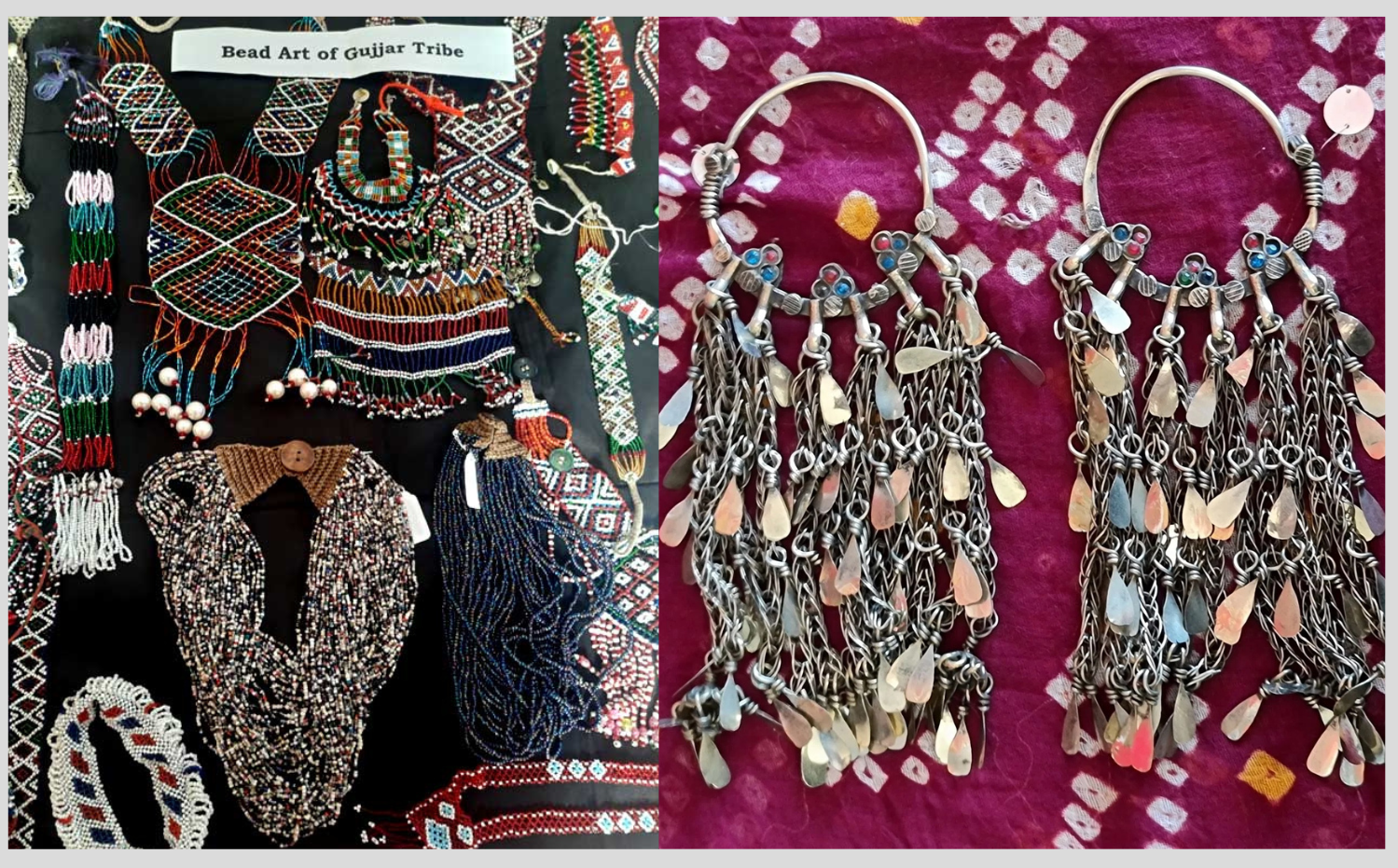
Silver jewelry carries cultural value among the Gujjars, particularly presented to daughters and brides. Popular neck pieces are the long chains gani and haseeri, the pointed Dodmala, coin-embellished Hamel, beaded Jomala, and bulky Hansli. Gujjar silver necklaces, layered at times and covered with beads or stones, convey wealth and lineage, held dearly as heirlooms for festivals and weddings. Their hoop, pendant, or semi-precious-stone earrings are made of silver and symbolize status and attractiveness, reflecting the craft and traditions of the tribe.
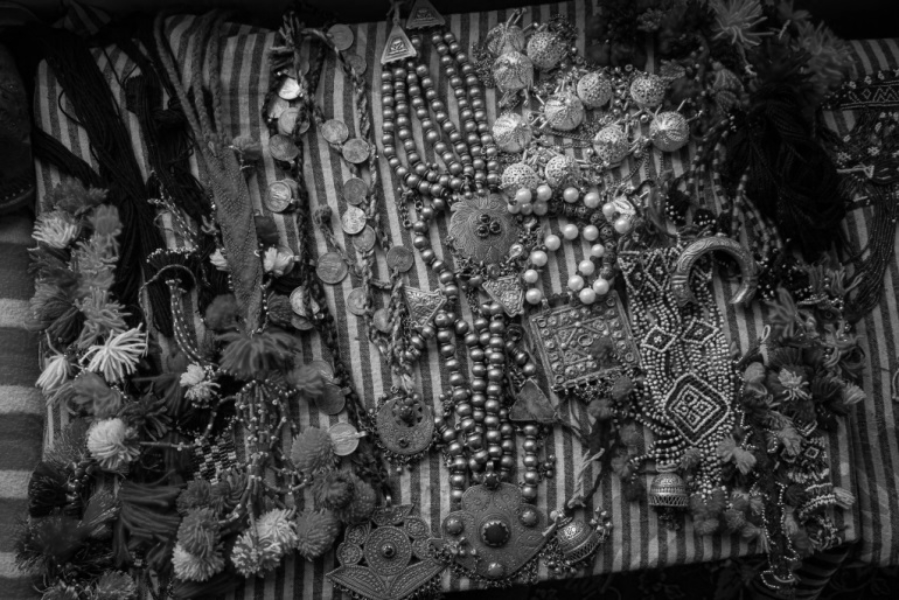
From silver, with other occasional uses of gold and brass, the ornaments of the Gujjar tribe are made. Embedded in the ornaments are semi-precious stones like turquoise, coral, and amber. The ornaments are also occasionally interspersed with coloured beads and intricate patterns, thus displaying craftsmanship handed down through generations. The material used not only has significance in culture but also signifies the status and wealth of the tribe.
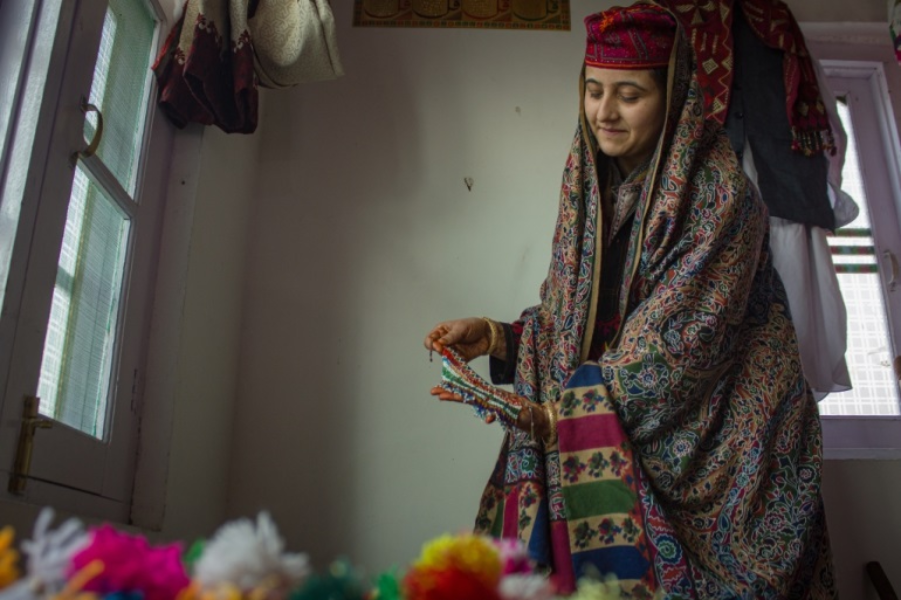
Ritualistic and cultural significance attaches to Gujjar jewelry hence it symbolizes traditions and identity, status, and money. The ornaments, being traditional and sometimes heirlooms, testify to the culture and crafts of the tribe. Jewelry is adorned during ceremonials like the wedding and festival because they are believed to bring luck and protection. In addition to being an artistic expression of the styling of the Gujjars, it is embellished with nature and religion, being highly stylized, offering precious materials such as silver and semi-precious stones.
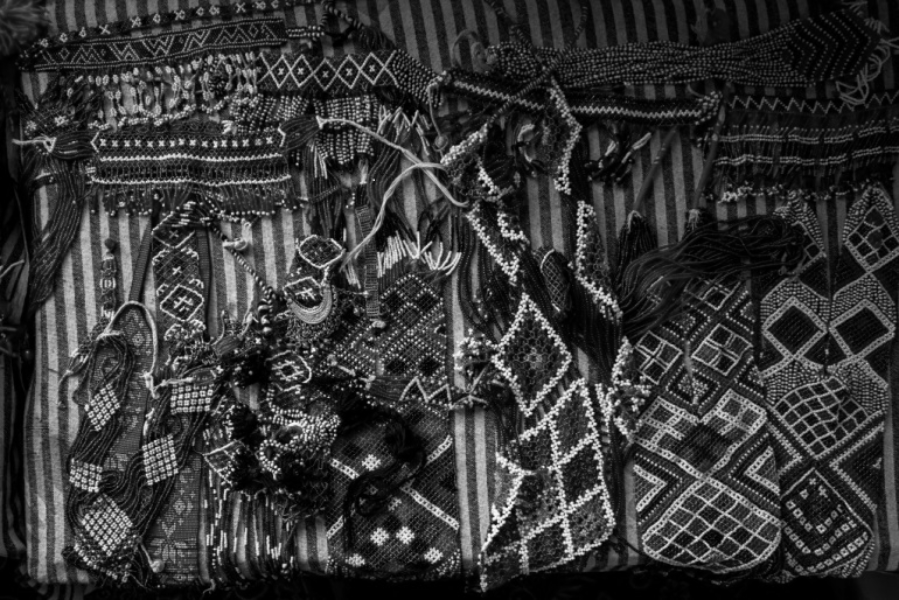
Gujjar jewelry is famous for its elaborate and fine details of the design, which are based on strong cultural roots. The motifs tend to borrow from nature, such as flower patterns, leaf patterns, and animal forms, representing harmony with nature. Also, geometric patterns like triangles, circles, and hexagons are used widely, representing oneness, equilibrium, and solidity. The Jewelry items are embedded with fine filigree details, blending traditional craftsmanship and symbolism. These designs demonstrate the community's cultural values, along with their sense of attachment to nature and their heritage.
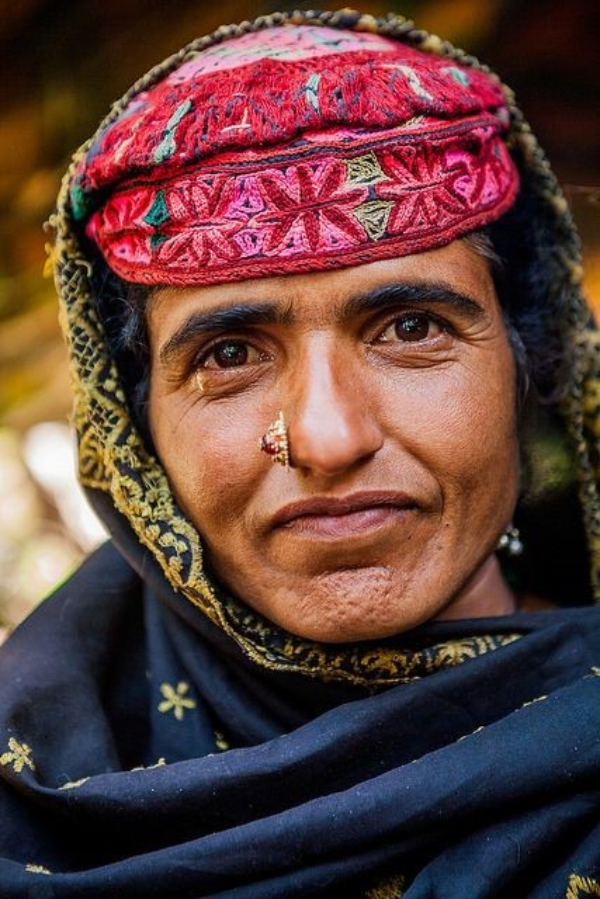
The Gujjars have numerous problems sustaining their heritage, including financial volatility and insufficient state assistance. They lack easy access to capital and endorsement by government officials, discouraging the expansion of their customary arts. Secondly, the young generation does not know much about their past and therefore would be ignorant about transmitting skills like crafts and Jewelry-making. It also lacks training institutions and infrastructure for economically empowering the Gujjar women as well as promoting and conserving their culture.

